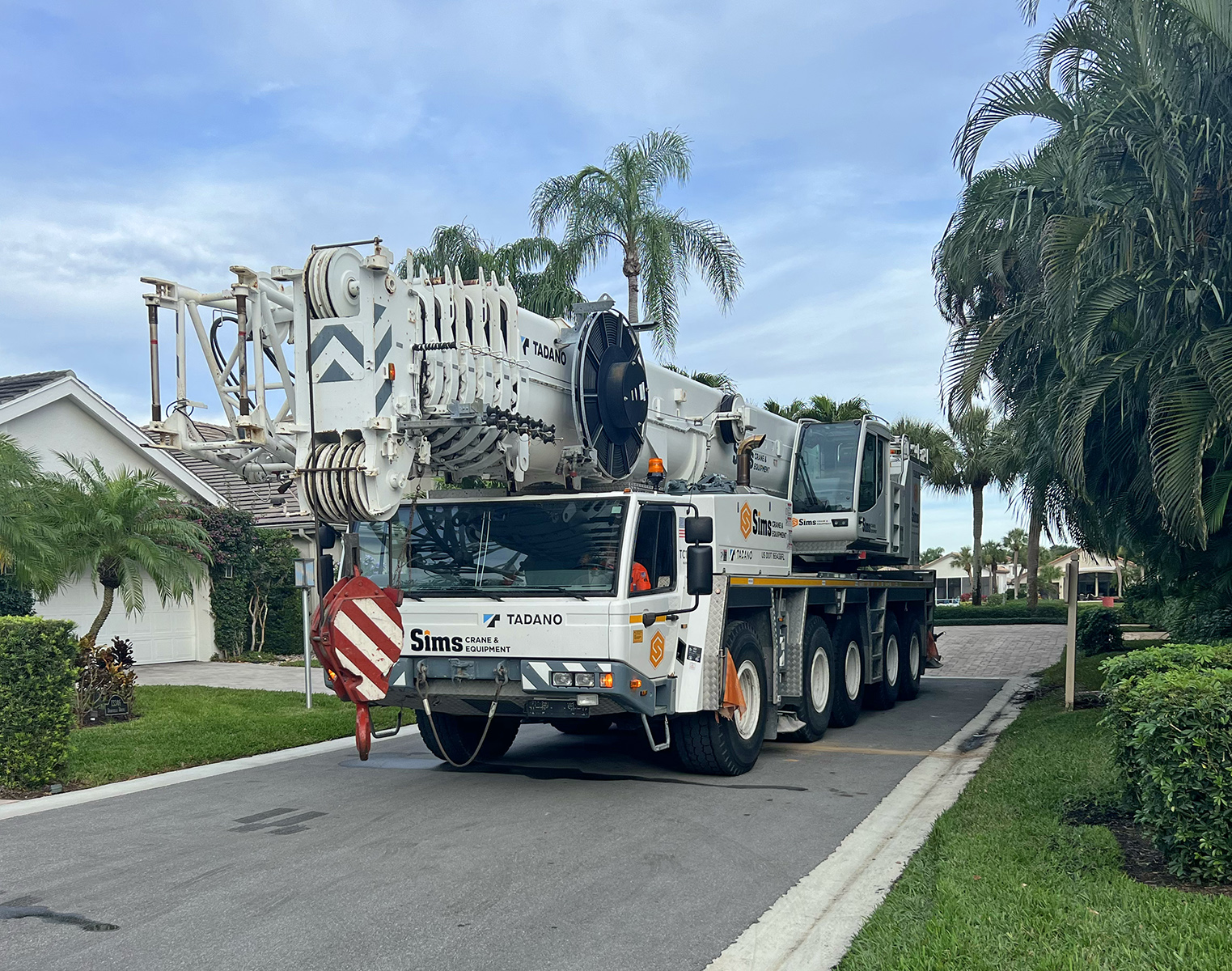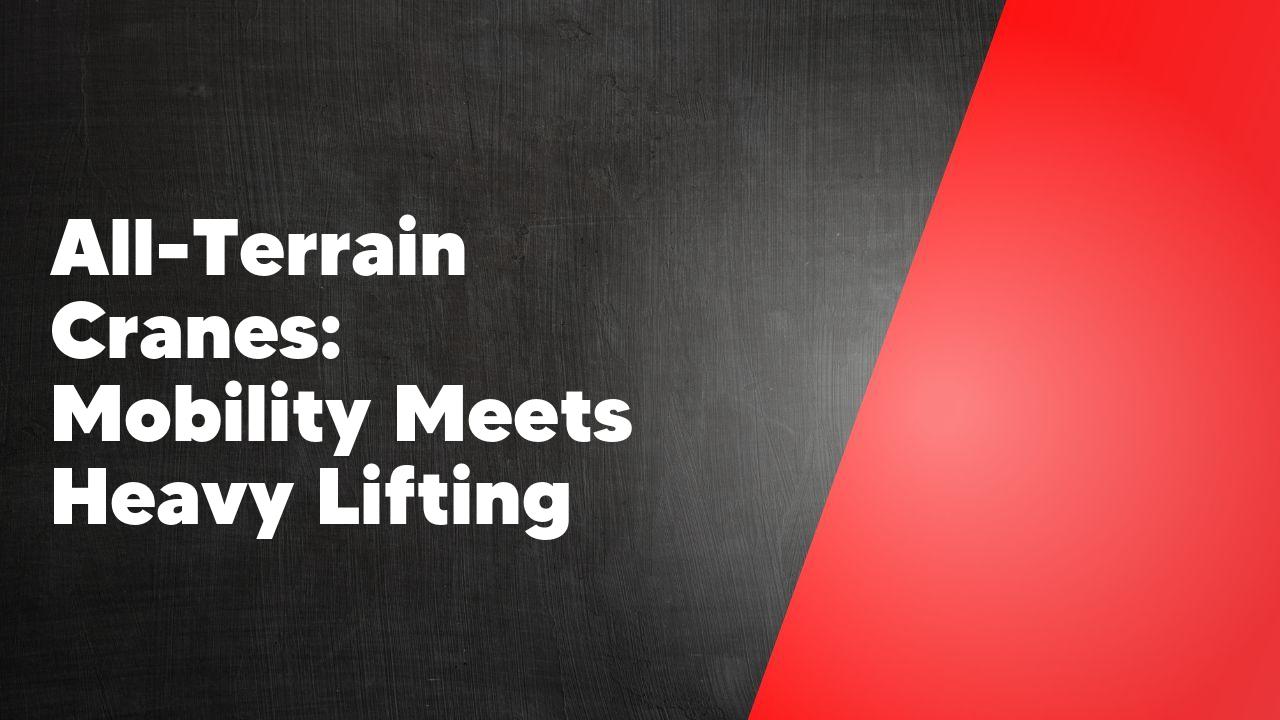All-Terrain Cranes are revolutionizing the world of heavy lifting with their exceptional mobility and versatility. These powerful machines are designed to navigate through rough terrains and reach even the most inaccessible areas, making them ideal for construction projects in challenging environments. With their ability to lift heavy loads with precision and efficiency, All-Terrain Cranes are becoming an indispensable tool in various industries.
The Evolution of All-Terrain Cranes: From Construction Sites to Off-Road Challenges
All-terrain cranes have come a long way since their inception on construction sites. These versatile machines have evolved to tackle off-road challenges with ease. With advancements in technology and engineering, all-terrain cranes now have the capability to navigate rough terrains and uneven surfaces. They are equipped with powerful engines and robust suspension systems that allow them to traverse through mud, gravel, and even steep inclines. Additionally, these cranes have improved stability and lifting capacities, making them suitable for a wide range of applications beyond construction sites. From oil and gas exploration to disaster relief efforts, all-terrain cranes have become indispensable in various industries.
Unleashing the Power: How All-Terrain Cranes Combine Mobility and Heavy Lifting Capabilities

All-terrain cranes are a remarkable piece of machinery that combines the mobility of a truck with the heavy lifting capabilities of a crane. These versatile machines are designed to navigate rough and uneven terrain, making them ideal for construction sites and other outdoor projects. With their ability to travel on both highways and off-road, all-terrain cranes offer a level of flexibility that traditional cranes cannot match. They are equipped with powerful engines and hydraulic systems that allow them to lift and move heavy loads with ease. Whether it’s lifting materials to great heights or maneuvering through tight spaces, all-terrain cranes are a valuable asset in the construction industry.
Versatility at its Best: Exploring the Wide Range of Applications for All-Terrain Cranes
All-terrain cranes are incredibly versatile machines that can be used in a wide range of applications. These cranes are designed to operate on all types of terrain, making them ideal for construction sites, industrial projects, and even emergency response situations. With their ability to navigate rough and uneven surfaces, all-terrain cranes can easily access hard-to-reach areas and lift heavy loads with precision and stability. They are commonly used for tasks such as lifting and placing materials, erecting structures, and even dismantling buildings. Whether it’s a construction project in a remote location or a disaster relief operation, all-terrain cranes are the go-to choice for professionals who require versatility and reliability in their equipment.
Overcoming Obstacles: How All-Terrain Cranes Tackle Challenging Terrains with Ease
All-terrain cranes are designed to tackle challenging terrains with ease, making them a valuable asset in construction and other industries. These versatile machines are equipped with powerful engines and robust suspension systems that allow them to navigate through rough and uneven surfaces. Whether it’s a muddy construction site or a rocky mountainous area, all-terrain cranes can handle it all. Their large tires provide excellent traction, ensuring stability and safety during operation. Additionally, these cranes have adjustable outriggers that provide additional support and stability on uneven ground. With their ability to overcome obstacles, all-terrain cranes are essential for completing projects in even the most difficult terrains.
Safety First: The Importance of Proper Training and Maintenance for All-Terrain Crane Operators
Proper training and maintenance are crucial for all-terrain crane operators to ensure safety on construction sites. All-terrain cranes are powerful machines that require skilled operators who are trained to handle them safely. Without proper training, operators may not be aware of the potential risks and hazards associated with operating these machines. Additionally, regular maintenance is essential to keep the cranes in optimal working condition. Neglecting maintenance can lead to mechanical failures and accidents. By prioritizing safety through training and maintenance, construction companies can minimize the risk of accidents and injuries, protecting both their workers and the public.
The Future of All-Terrain Cranes: Innovations and Advancements in Mobility and Heavy Lifting Technology
In recent years, the all-terrain crane industry has witnessed significant advancements in mobility and heavy lifting technology. These innovations have revolutionized the way cranes are used in various industries, including construction, oil and gas, and mining. One of the key developments is the improvement in mobility, allowing cranes to navigate challenging terrains with ease. This has expanded the scope of projects that can be undertaken using all-terrain cranes, as they can now access remote and difficult-to-reach locations. Additionally, advancements in heavy lifting technology have increased the lifting capacity of cranes, enabling them to handle heavier loads and complete tasks more efficiently. These advancements in mobility and heavy lifting technology are expected to shape the future of all-terrain cranes, making them even more versatile and indispensable in the construction and heavy industries.
Conclusion
In conclusion, all-terrain cranes have revolutionized the construction industry by combining mobility and heavy lifting capabilities. These versatile machines are able to navigate rough terrains and reach remote locations, making them ideal for a wide range of projects. With their ability to lift heavy loads and move with ease, all-terrain cranes have become an essential tool for construction companies around the world.
What are all-terrain cranes?
All-terrain cranes are versatile mobile cranes that are designed to operate on both on-road and off-road conditions. They are equipped with multiple axles and have the ability to travel at high speeds on highways as well as maneuver through rough terrains.
What are the advantages of using all-terrain cranes?
All-terrain cranes offer several advantages, including:
- High mobility: They can easily move from one job site to another, even in challenging terrains.
- Heavy lifting capacity: They are capable of lifting heavy loads, making them suitable for a wide range of construction and industrial projects.
- Flexible operation: All-terrain cranes can be used for various applications, such as construction, maintenance, and infrastructure projects.
- Quick setup: These cranes can be set up quickly, allowing for efficient and timely completion of tasks.
What are the typical uses of all-terrain cranes?
All-terrain cranes are commonly used in various industries and applications, including:
- Construction: They are used for lifting and placing heavy materials, such as steel beams and concrete panels, during building construction.
- Oil and gas: All-terrain cranes are utilized for maintenance and installation of equipment in oil refineries and drilling sites.
- Infrastructure: They play a crucial role in the construction and maintenance of bridges, highways, and other large-scale infrastructure projects.
- Power generation: These cranes are used for the installation and maintenance of power transmission lines and wind turbines.
What safety measures should be followed when operating all-terrain cranes?
When operating all-terrain cranes, it is important to adhere to the following safety measures:
- Ensure proper training and certification of crane operators.
- Regularly inspect and maintain the crane to ensure its safe operation.
- Follow all manufacturer’s guidelines and instructions for operating the crane.
- Use appropriate rigging and lifting techniques to prevent accidents and load failures.
<li

